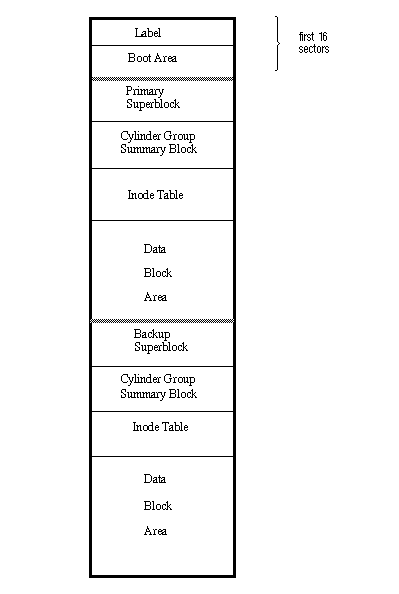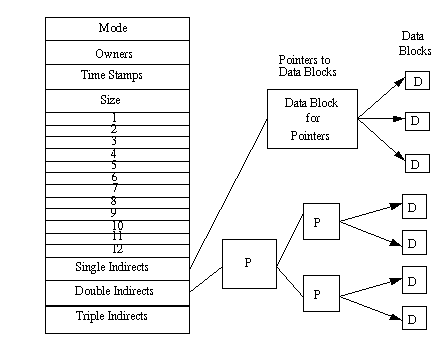
2.2 Disk Partitions
IRIX places the Superblock in the second block of the file system.
The index node, known as the inode, keeps track of the location of the files on the disk.
The first Superblock in a file system is the Primary one and the remainder are backup copies for that partition or slice. The Cylinder Group Summary Block keeps track of:
FIGURE 2.4 Logical Disk Layout 
The default size for each Data Block is 8192 bytes, divided into 8 fragments of 1024 bytes each. 
Inodes are assigned one per file. Each Inode Block consists of ownership, timestamps (creation, modification, access), size, number of hard links, and location of data block information for that file. The inode does not contain the name of the file. That is defined by the directory table information.
FIGURE 2.5 Inode Block Contents
Each pointer is 4 bytes long Þ 8192 bytes/pointer block ¸ 4 bytes/pointer * 8192 bytes/data block
Þ 1.7 * 107 bytes for a single indirect.
* (8192/4) Þ 3.4 * 1010 bytes for a double indirect.
* (8192/4)2 Þ 7.0 * 1013 bytes for a triple indirect.
The maximum size of a Unix file and a Unix file system are limited by the capabilities of the operating system. Those for SunOS and IRIX are listed in the table below.
| Operating System | File Size | File System Size |
|---|---|---|
| SunOS 4.1.X | 2 GB | 2 GB |
| SunOS 5.X | 2 GB | 1 TB |
| IRIX 5.X | 2 GB | 8 GB |
| IRIX 6.2 | 9,000,000 TB (64-bit Kernel) 1 TB (32-bit Kernel) | 9,000,000 TB (64-bit Kernel) 1 TB (32-bit Kernel) |